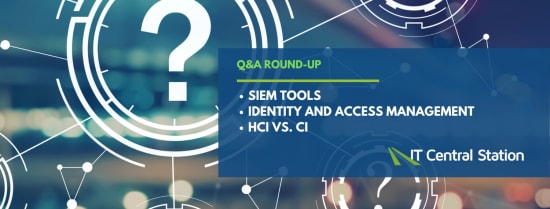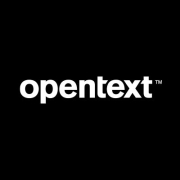
Members of the IT Central Station community are always happy to take a few minutes to help other users by answering questions posted on our site. In this Q&A round-up, we’re focusing on our users’ answers about SIEM, Identity and Access Management, and the Differences between Hyper-converged Infrastructure vs Converged Infrastructure.
Which is the best SIEM tool for a mid-sized enterprise financial services firm: Arcsight or Securonix?
One of our users was looking for SIEM recommendations, and was specifically looking at ArcSight and Securonix. As always users were very helpful, and suggested possible tools based on their own experience.
ArcSight appeared to be the popular recommendation between the two tools; One user, Himanshu Shah, suggested that Securonix may be better suited for a mid-sized business as ArcSight “works on EPS (Events per second) costing”, which can become costly. Users also suggested looking at other options, such as QRadar, Splunk, and LogRhythm.
However, Consulta85d2 responded, “Neither, or both. Having done literally thousands of SIEM deployments, I can tell you from experience that the technology choice isn’t the most important choice. The critical choice is in the resources and commitment to manage and use the system.”
Aji Joseph held similar sentiments and highlighted the key role that the SoC team plays: “The success of SIEM solutions depends a lot on the expertise of the SoC team that will be managing the alerts generated by SIEM solutions.” He also suggested evaluating the forensics capabilities of the various solutions before buying.
What are some tips for effective identity and access management to prevent insider data breaches?
Insider breaches can be a real issue in businesses. Users gave advice on how to effectively implement Identity and Access Management to tackle this issue.
Mark Adams, a Senior Manager, IT Security and Compliance / CISO at a large construction company, gave great advice for implementing a solution, noting that it’s important to “make the implementation a formal project and involve all key stakeholders, including those from the business, not just IT folks.” He gave practical tips, including identifying and classifying all information assets and creating rules for access to those assets. He also highlighted the importance of reviewing access periodically. He stated, “Data owners should be involved in the review since they are usually in a better position to determine if individuals’ access is still legitimate.”
What are the key differences between converged and hyper-converged solutions?
Users helped to clarify key differences between hyper-converged (HCI) and converged infrastructure. Based on the users’ answers, the key differences revolve around ease of use, flexibility, and price.
HCI solutions are typically more expensive, but have significant advantages. Steffen Hornung pointed to the scaleout nature of HCI, noting that “add more nodes to the system to support new workloads without losing Performance because you add all types at once (compute, storage and networking).”
Dan Reynolds summarised the appeal of HCI really well, pointing out that it’s a complete solution: “Hyper-converged is typically an “all in one box/rack” solution. It consists of compute, storage & network resources all tied together physically (and through software)….You don’t have to architect it. All you have to know is how much “power” you need (what you want to do with it).” In contrast, he noted that “with converged infrastructure (which can still be ‘software defined’) you have to match and configure the components to work together.”
Thanks, as always, to all the users who are taking the time to ask and answer questions on IT Central Station!
IT Central Station is here for you, to learn and help your peers. In a market full of vendor hype, we enable you to get real, unbiased information from people like you.
Do you have a question that you’d like to ask our IT Central Station Community? Ask now!








@Himanshu Shah @Consulta85d2 @Aji Joseph @Mark Adams @Steffen Hornung @Dan Reynolds